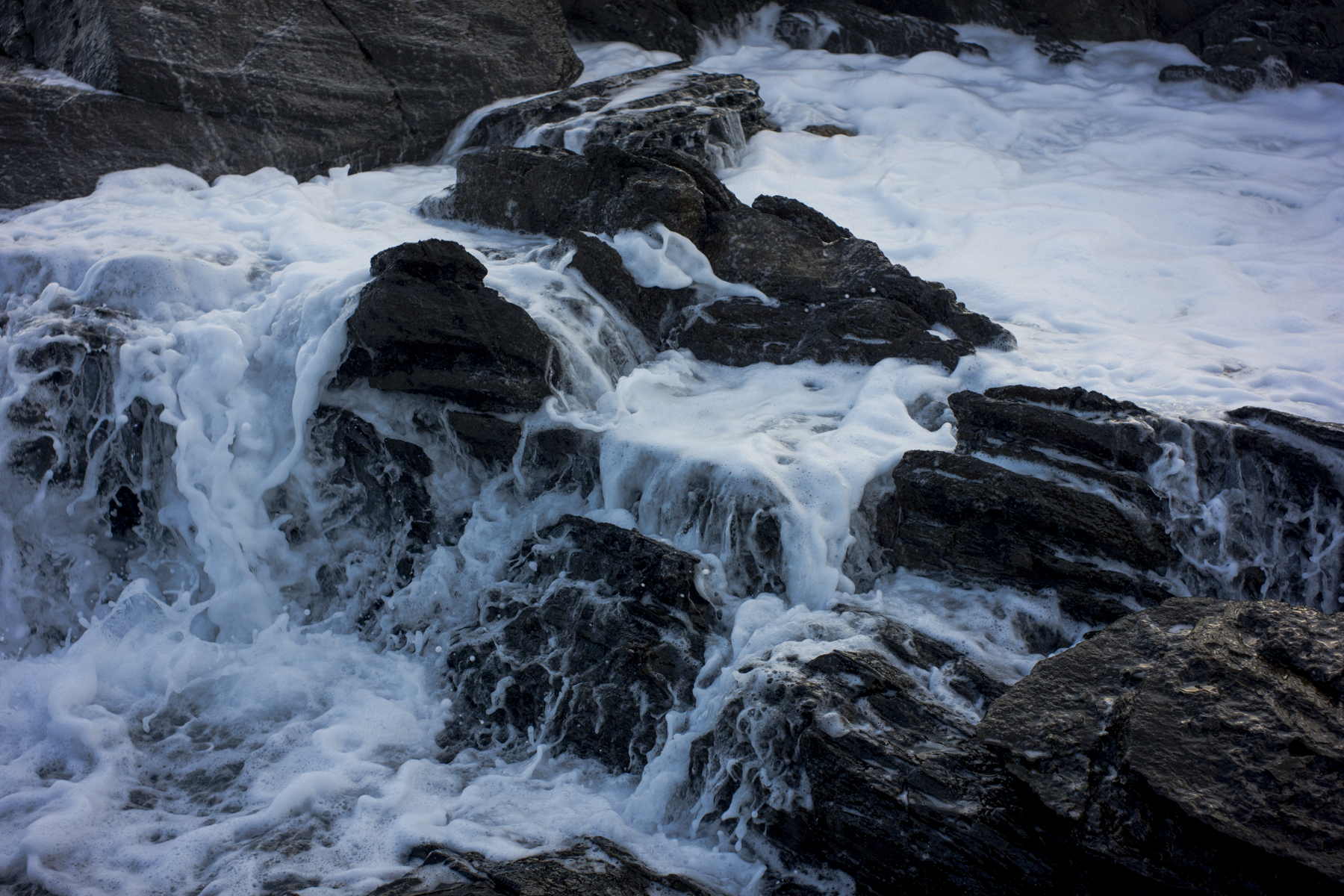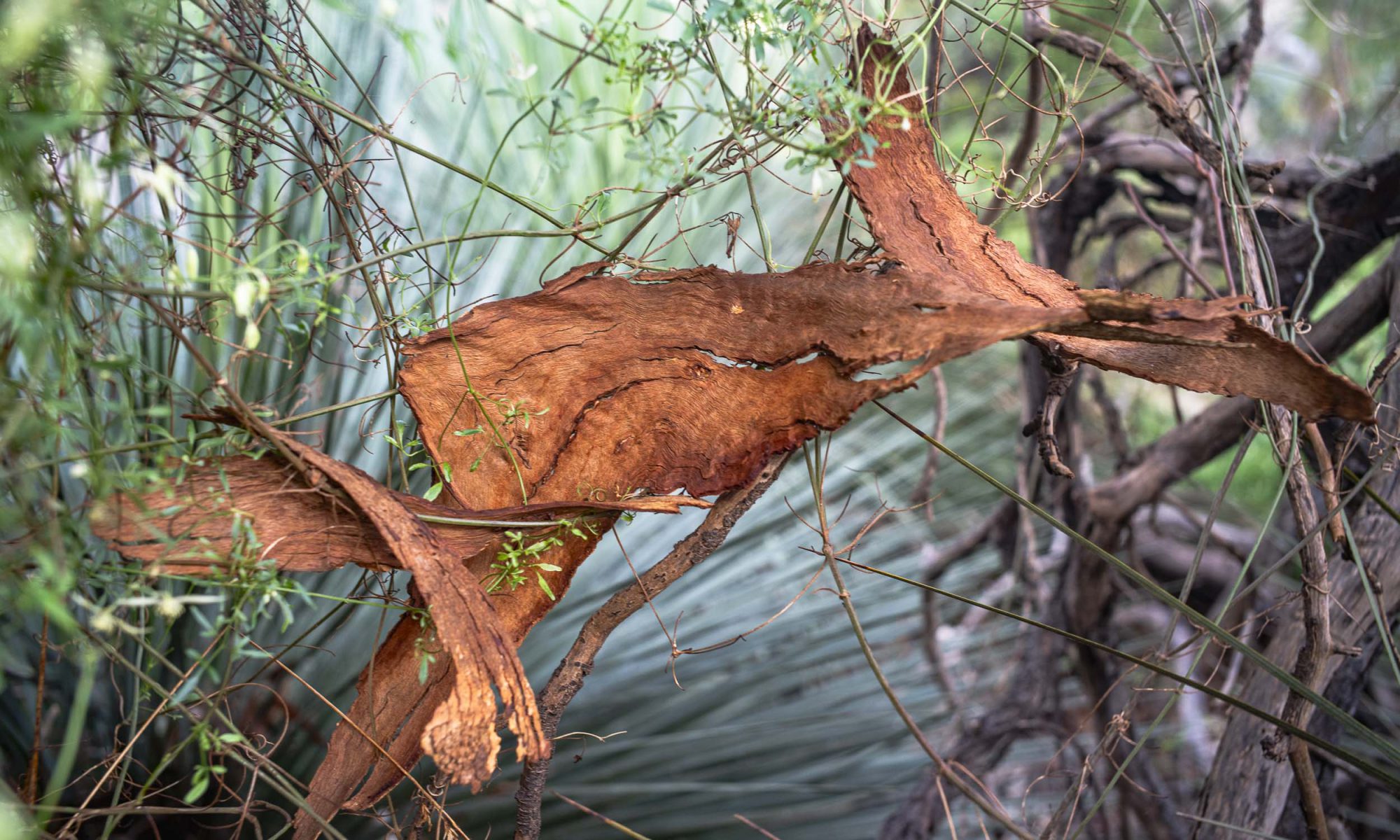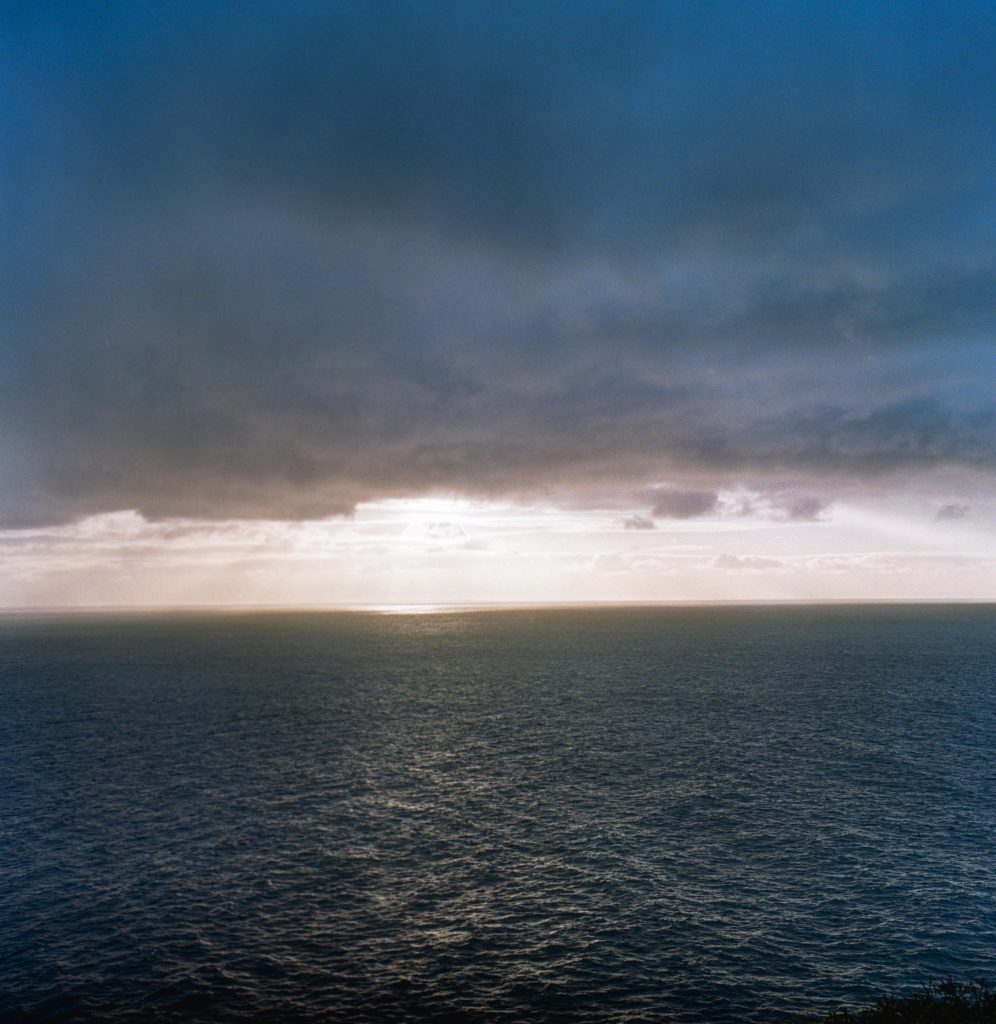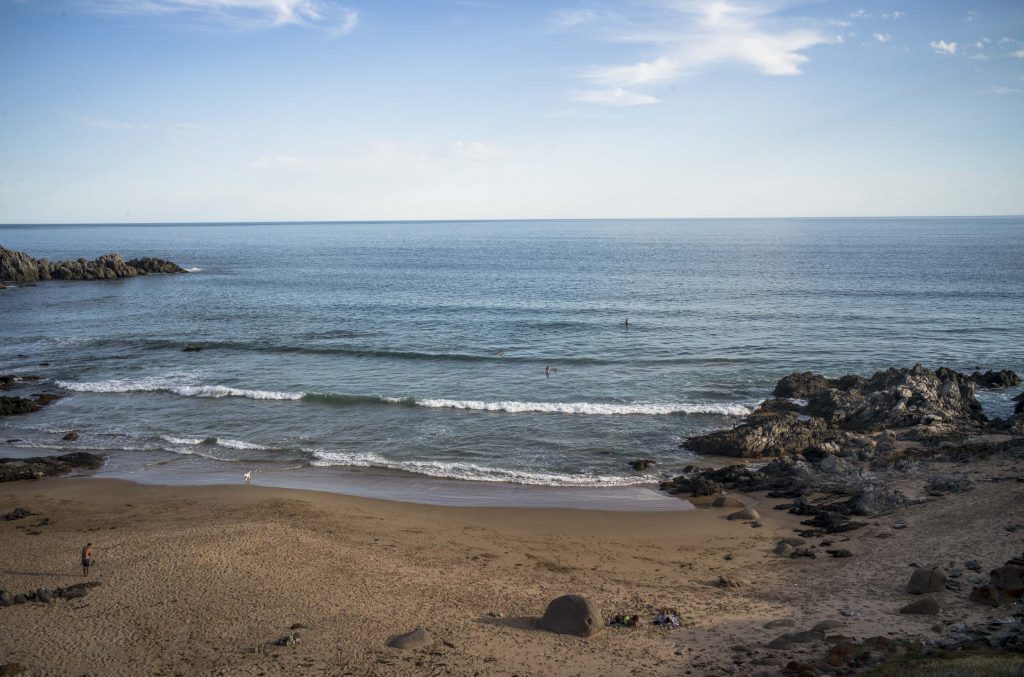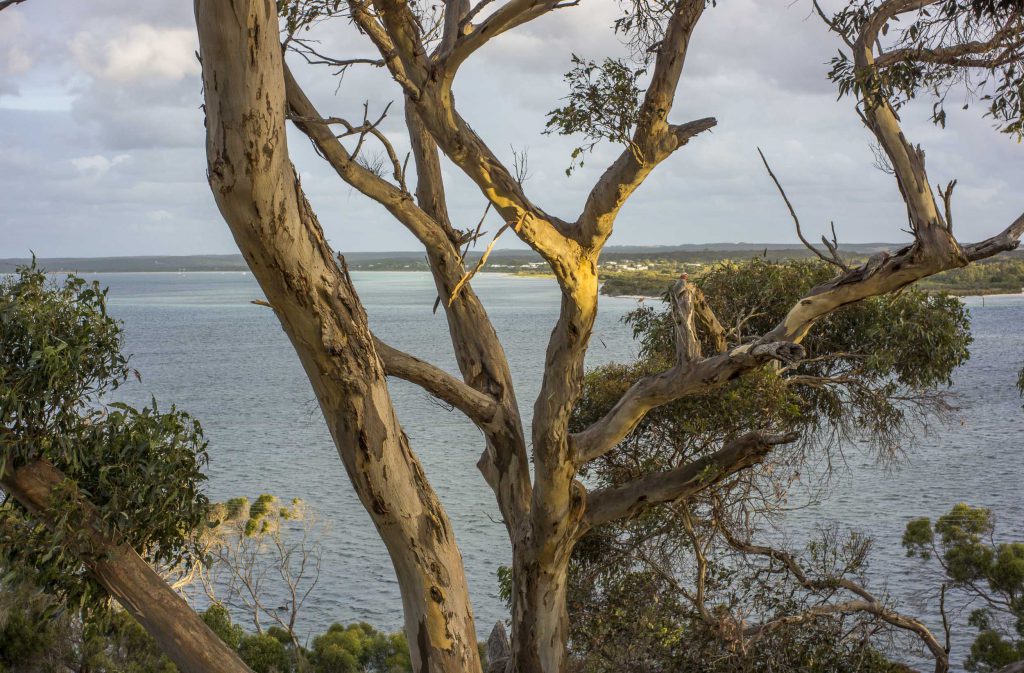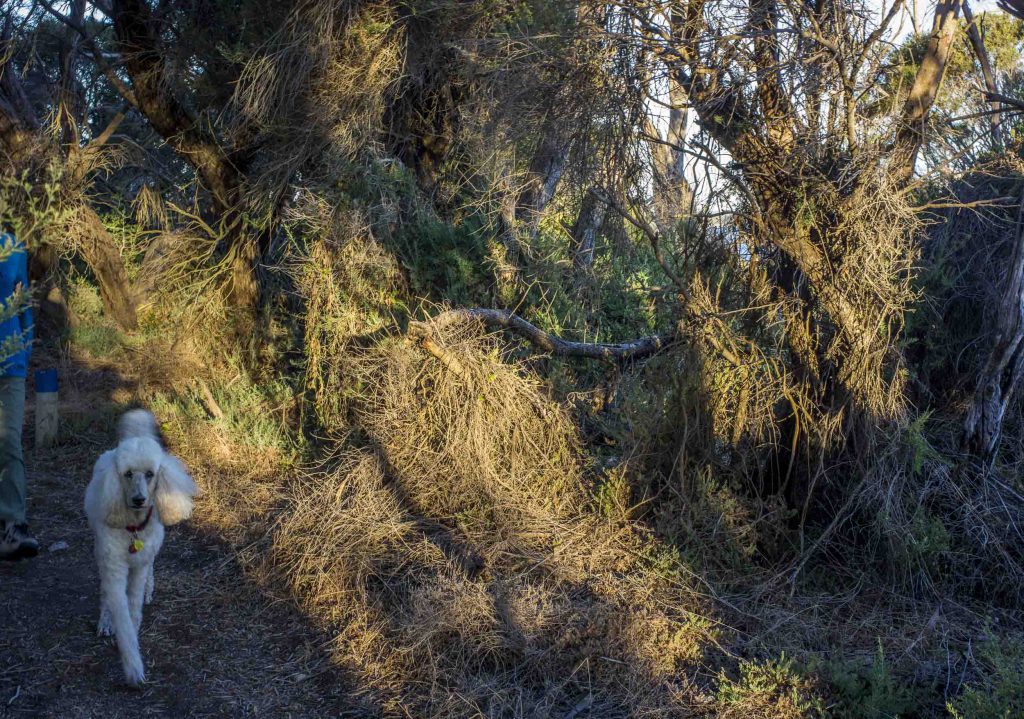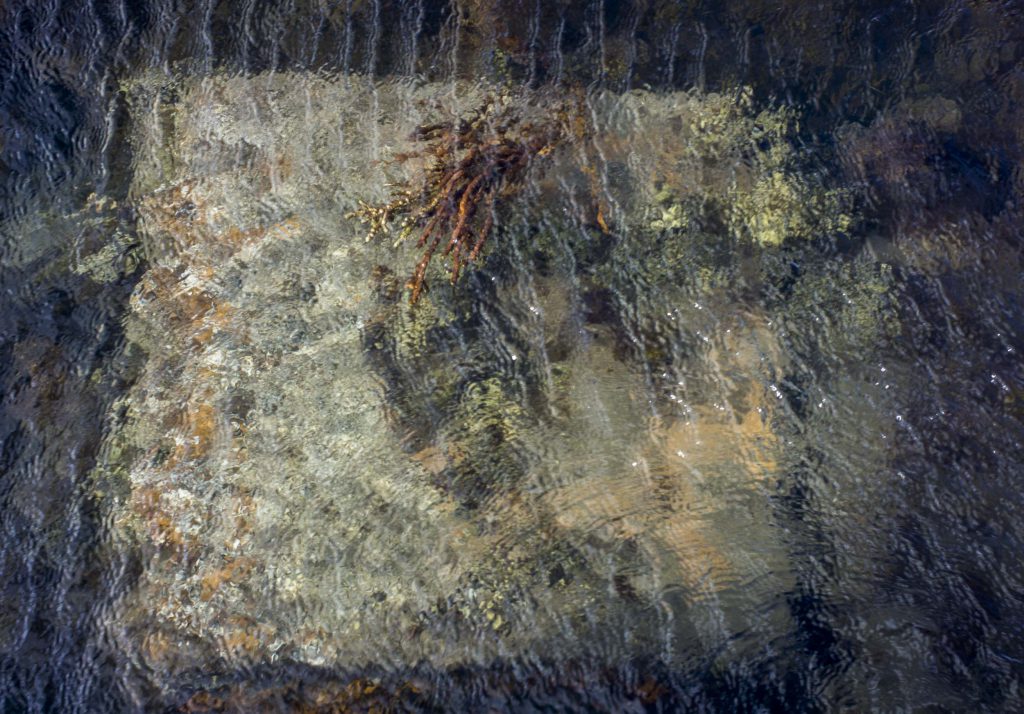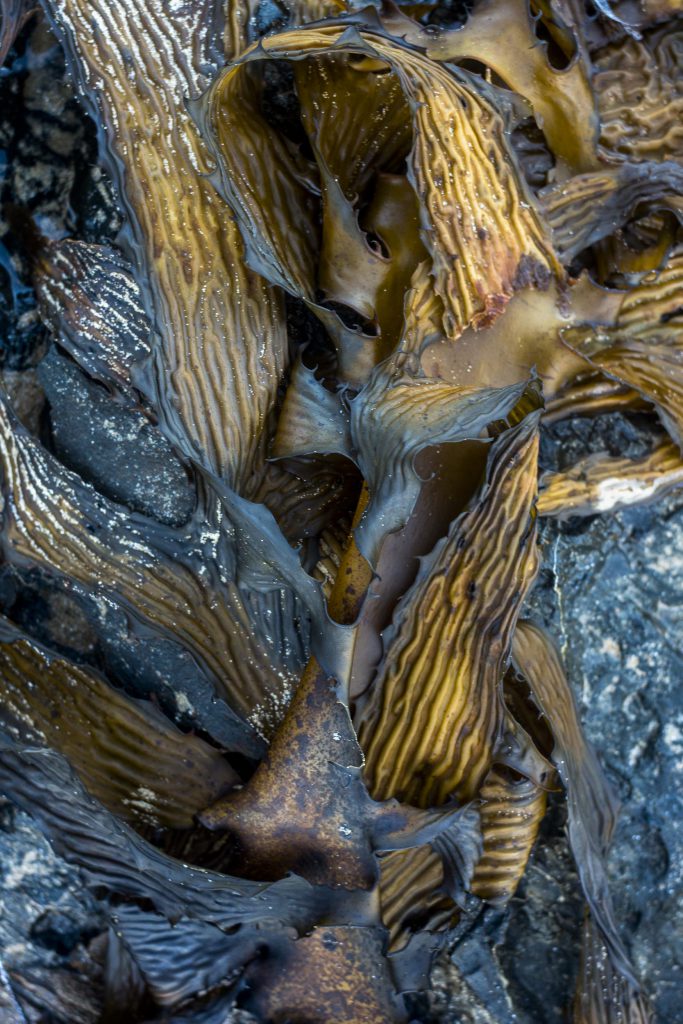My twice-a-day poodlewalks during the six weeks that Suzanne needed to wear her moonboot to help heal her broken fibula were hobbled ones. I was walking both standard poodles, but as I’d badly damaged my back early in that six weeks period I wasn’t able to walk very far. I could only shuffle along in those areas where the two poodles could run free and more or less look after themselves.
The photography was limited during this period. I just carried a digital camera and on many of the walks I wouldn’t even make a photo. Walking 2 poodles with a damaged back wasn’t conducive to photography.
This is one of the photos I did make whilst on a hobbled walk in part of the Rosetta Head Reserve. I would drive to Petrel Cove and then hobble my way around the reserve and through its scrubland in the early morning.
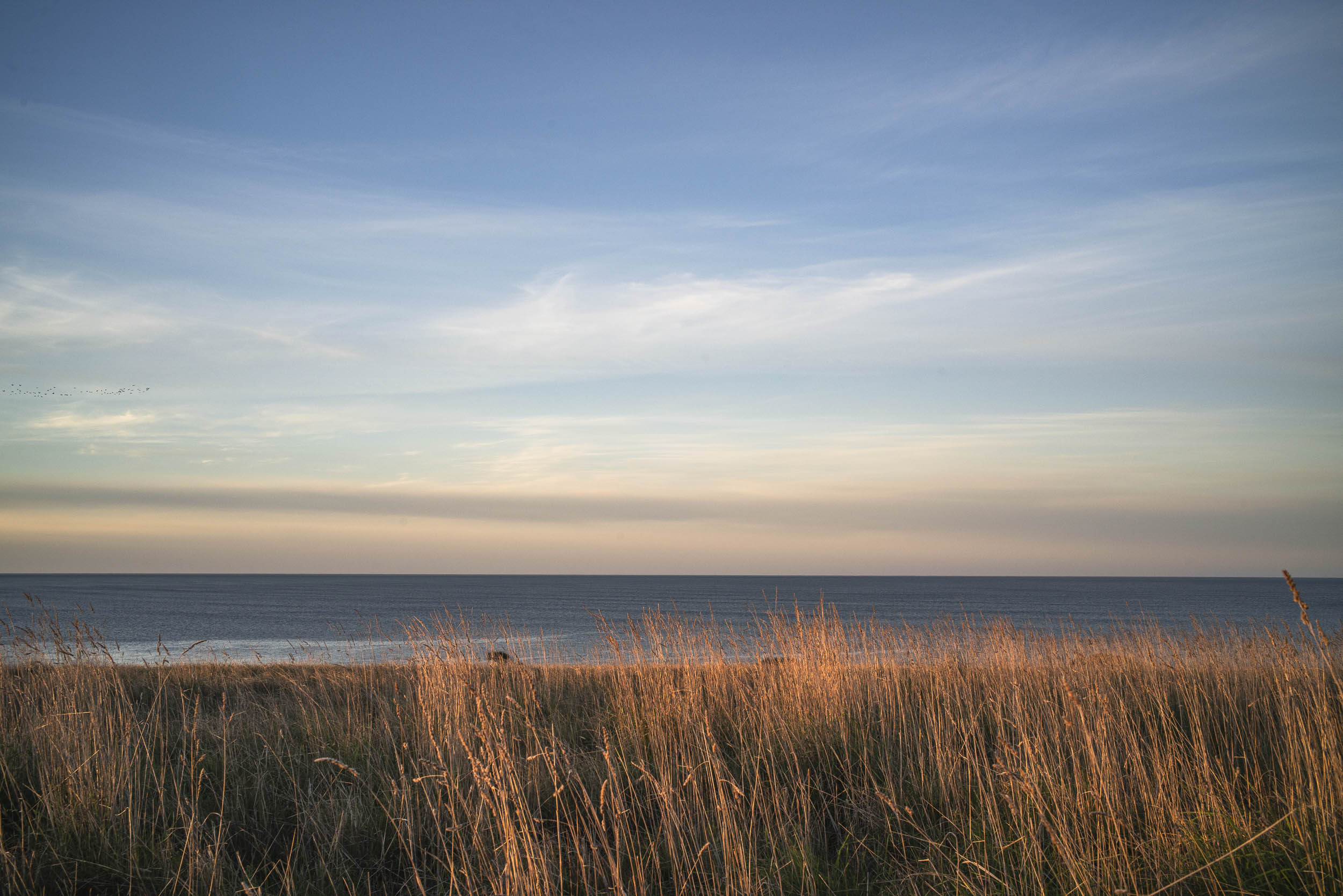
I would usually start this walk 30 minutes or so before sunrise when there was no one around. The walk would be in its final stages as the early morning sunlight flickered across the grasses in the reserve.
Another of the early morning walks involved driving to the carpark on the western side of Rosetta Head, then I’d slowly shuffling my way along its northern side until I reached the eastern end where I could look over Encounter Bay:
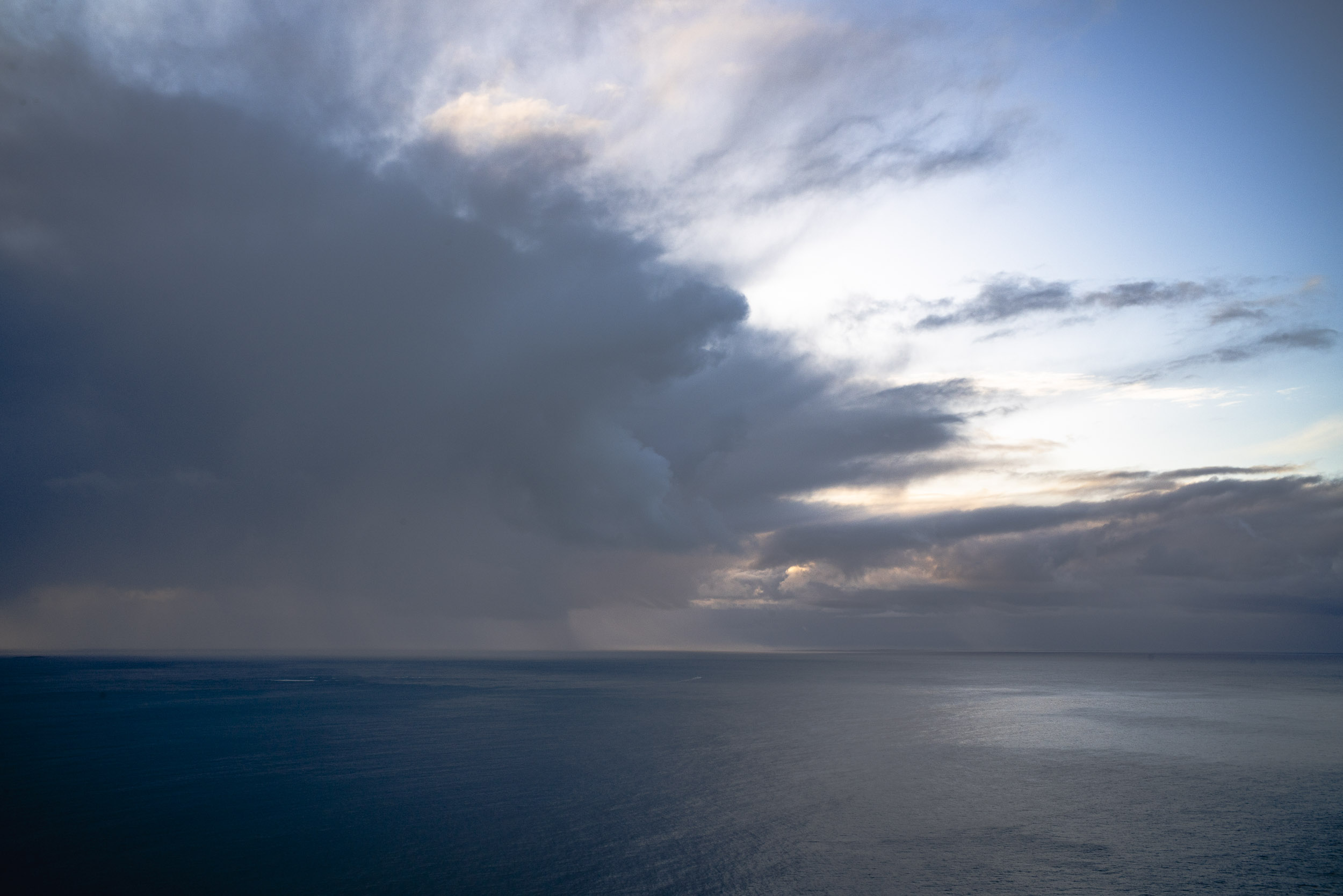
I would do this walk on those occasions when there was early morning cloud over the sea before sunrise. I would hope that there was nobody on the top of the Bluff viewing the sunrise, flying a drone or taking photos. I was able to hobble my way back to the car park on the western side of Rosetta Head, The clouds usually dissipated after sunrise, except when the rains swept in from the wast.
